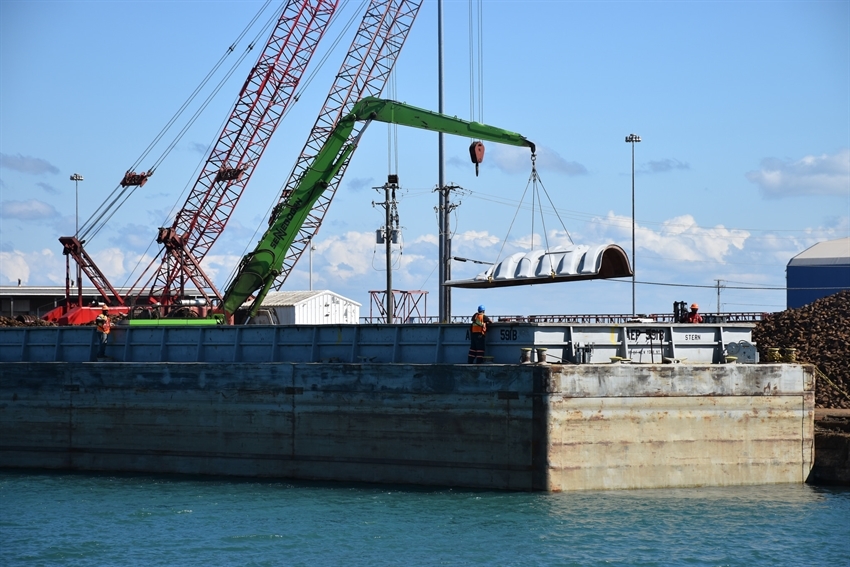
Wildlife Habitat Council
Industry along the Calumet River
The Chicago Community Trust is currently funding ten community-led riverfront projects through their Our Great Rivers grant. This piece is the final installment of a ten-part series highlighting these projects.
Chicago’s rivers are working rivers. The rivers are still used to ship materials and goods to and from Chicago—one barge carries the load of hundreds of railcars or trucks. Industrial corridors dot the landscape along the Chicago and Calumet rivers.
The Our Great Rivers vision calls for recreational access and environmental improvements along the rivers, but also for the preservation and continued evolution of a productive river system. Indeed, as industries are substantial users of our rivers system, we need their help to make the rivers inviting and living, too.

MPC
A barge operating at the Port of Chicago.
The Wildlife Habitat Council (WHC), a recipient of the Chicago Community Trust’s Our Great Rivers grant, is working at the “intersection of business and conservation” to align companies’ corporate goals with local and regional conservation needs. WHC has directed their attention to helping businesses create open space along the Calumet River Industrial Corridor and participate in conservation actions that engage company employees, families, and community.
WHC and partners, including the Calumet Area Industrial Commission, City of Chicago 10th Ward and others are working with industry to create conservation awareness and programs on shoreline and near-shore habitats of the Calumet River. According to Daniel Goldfarb, Senior Manager of Conservation Partnerships at Wildlife Habitat Council, industrial employees and residents in the Calumet River would like access to open space and the riverfront, but at first glance, it can seem impossible or unsafe due to the industrial uses. On the other hand, industrial users and city agencies are often concerned that the land is too degraded or that any type of open space would be a liability given truck and barge traffic.
“The Wildlife Habitat Council delivers right at this crossroads by presenting options and examples where industries have been able to include open space to benefit their workers and the community in a way that is safe and responsible,” states Goldfarb.

Wildlife Habitat Council
Daniel Goldfarb at one of the Wildlife Habitat Council workshops.
WHC has been conducting outreach to industrial companies along the Calumet rivers. Earlier this summer, they held a workshop for industrial leaders interested in greening their Calumet River properties and learning about urban ecology, forestry, and green infrastructure. They plan to host another workshop this Fall.
Solutions do not always include building large parks or advocating for river kayaking, but rather include passive recreation or supporting the habitat by planting native species. The Ford Assembly Plant is a great example of the type of effort that the WHC encourages, where there is safe riverfront access for employees and the community to recreate and enjoy the river on this company’s properties.
A great example of industry and conservation coming together is the extensive native landscapes and habitats reclaimed by AOS Terminal on former Wisconsin Steel remediated properties on the Calumet River and their employee and community engagement in the planting of native trees.
“There are companies currently doing a variety of conservation work,” Goldfarb informed. “Before the Our Great Rivers vision, it was difficult to link their work to the river system. The vision has given us a framework when approaching companies about starting river-related conservation.”
------------------------------
Hanna Udischas is a former MPC Research Assistant.